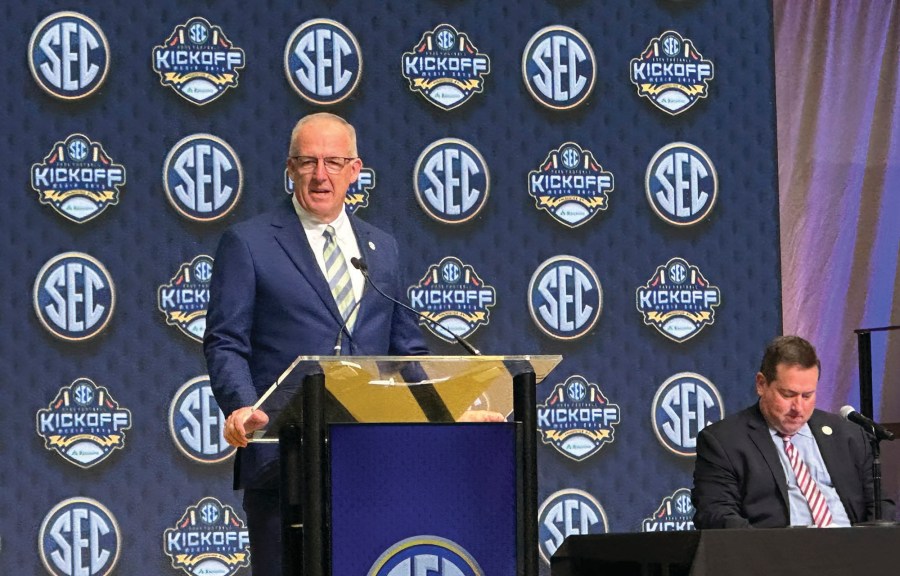
In a significant development for college football, the Southeastern Conference (SEC) and the Big Ten Conference have reached a stalemate regarding the future format of the College Football Playoff (CFP). Despite ongoing discussions, the two leagues have yet to find common ground on how to proceed after the conclusion of the upcoming season.
During a press conference in Atlanta on Monday, SEC Commissioner Greg Sankey revealed that he has engaged in multiple conversations with Big Ten Commissioner Tony Petitti, including four discussions just last week. Sankey acknowledged the ongoing dialogue but indicated that the two leagues have differing perspectives on playoff allocations.
Disagreements on Playoff Structure
The crux of the disagreement centers around the proposed allocation of playoff spots. The Big Ten is advocating for a format that includes a distribution of bids providing four automatic entries for both the SEC and Big Ten, along with two bids each for the Atlantic Coast Conference (ACC) and Big 12. In contrast, the SEC has shifted its stance and now supports a model that guarantees five conference champions and 11 at-large bids, which would likely favor the top conferences in most seasons.
This decision-making process has become increasingly complex. The CFP announced in May that teams in the forthcoming playoff will be seeded solely based on their rankings, rather than adjusting positions to reward conference champions. This change follows the confusion of last season’s playoff, which was the first to feature 12 teams and resulted in Arizona State and Boise State receiving byes despite being ranked 12th and 9th, respectively, by the selection committee.
Future of the Playoff Format
According to the contract governing the College Football Playoff from 2026 through 2031, both the SEC and Big Ten must consult with other conferences regarding potential changes to the playoff structure. Nevertheless, the contract also grants them the power to implement modifications they mutually agree upon.
Sankey emphasized the importance of responsible decision-making, stating, “When you’re given authority, you want to be responsible in using that authority.” The SEC Commissioner also noted that while achieving unanimous agreement may not be necessary, the two leagues should focus on presenting and discussing various format ideas to reach a consensus.
The current scenario underscores the ongoing evolution of college football as it navigates the complexities of playoff formats and conference dynamics. As the SEC and Big Ten continue their discussions, the outcome will have lasting implications for the structure of college football championships.







